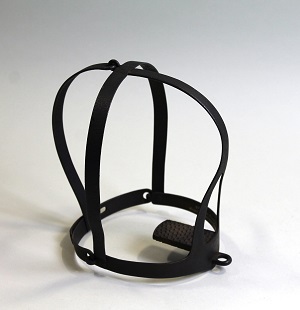Creating an action adventure display
By Anawara Begum (Voices of Asia Project Placement Student)
I am a big fan of Japanese anime and Dragon Ball Z in particular. After discussion with the world cultures curator Antonia we took a proposal to the Collection Development Committee that Leeds acquire a Dragon Ball Z Cell Saga poster, along with a Goku action figure and a Frieza Pop Vinyl. They agreed and today we finalised a display arrangement in a corridor case here at Leeds Discovery Centre to showcase these new purchases.
To give more historical depth to the display we picked a Batman mask and a tiny Robin figure as an American contrast to the Pokémon Pikachu toy that is already in the collection. Pokémon was created by Satoshi Tajiri in 1995, and this franchise began as a video game.
If you walk into Forbidden Planet in Leeds this month the Pop Vinyl figures occupy a whole wall. They are the big craze of the toy world at the moment. They include Marvel characters, as well as Japanese anime figures and even Harry Potter versions.
What is Dragon Ball Z?
Dragon Ball Z is currently the most famous and popular Japanese anime watched by millions worldwide. It was created by Akira Toriyama as a manga (graphic novel) in 1988 and the anime (animation) came out the following year. The warrior hero Goku defends Planet Earth with his friends from evil villains such as Frieza. Goku's nemesis the villain Frieza fears a rival who may surpass his own might so he blows up planet Vageta to prevent this from happening. During their battle Goku eventually beats Frieza, but never kills him.
In Dragon Ball Z there are many storylines which take place over hundreds of episodes, drawing you in to a world of action and fantasy.
This Dragon Ball Z poster (pictured above) was acquired a few weeks ago and it shows a large number of characters alongside Goku.
Naruto Manga on display:
As well as the Dragon Ball Z items the current display includes a Naruto manga by Masashi Kishimoto, chosen by Becky Stone. This was purchased to complement five manga already in the Leeds collections, bought for the 2001 'Tales from Japan' exhibition. The manga was first published in 1997, and the anime first aired in Japan in 2002. Naruto is a slightly more contemporary manga and anime than Dragon Ball Z and has also has a large fan base.
Having this manga on display in the same case will be a great way for some direct comparisons with the Dragon Ball Z Goku and Freeza figures. It is interesting that these anime have similar storylines - the main character usually fights the strongest enemy and always tries to protect their friends from harm. Both Naruto and Goku have similar traits when they are not fighting - they just love eating and somehow get themselves into trouble. Batman and Ash from Pokémon also train to get stronger but they have different goals - they still believe in doing the right thing.
Who is Naruto?
Naruto is about a young adolescent boy who dreams of becoming the Hokage (village leader) so that he can win the respect of the whole village, as he is seen as an outcast. He always used to get into trouble in order to get noticed in a village that despised him and he never truly understood why he was seen as a pest. Through his ninja training Naruto starts to get stronger and gained the respect of his comrades. Naruto believes that by getting stronger he will be able to protect his friends. Because of his strong will eventually everyone wants to help him.
Why I love anime
Since primary school my siblings and I (especially my two brothers) have always been interested in any shows that were full with action, such as Dragon Ball Z. I used to watch the anime programmes regularly in the evening. My favourite villain was Majin Buu, a pink character that was not aware how powerful he was and loved eating!
My younger brother is always ready with his opinions on the storylines and characters and I have discussed the acquisitions and displays with him. When I showed him photos of the new mini display he said: ‘It’s [just] ok, I won’t lie about that, I wouldn’t come to see it, it would have been better if there was more villains’ [you need to do a much bigger and move complex display!].
We hope that anime fans and visitors who grew up with the cartoons will get a frisson of recognition when they see the Dragon Ball Z and Naruto Manga display on show in the Voices of Asia gallery in Leeds City Museum later this year!




















